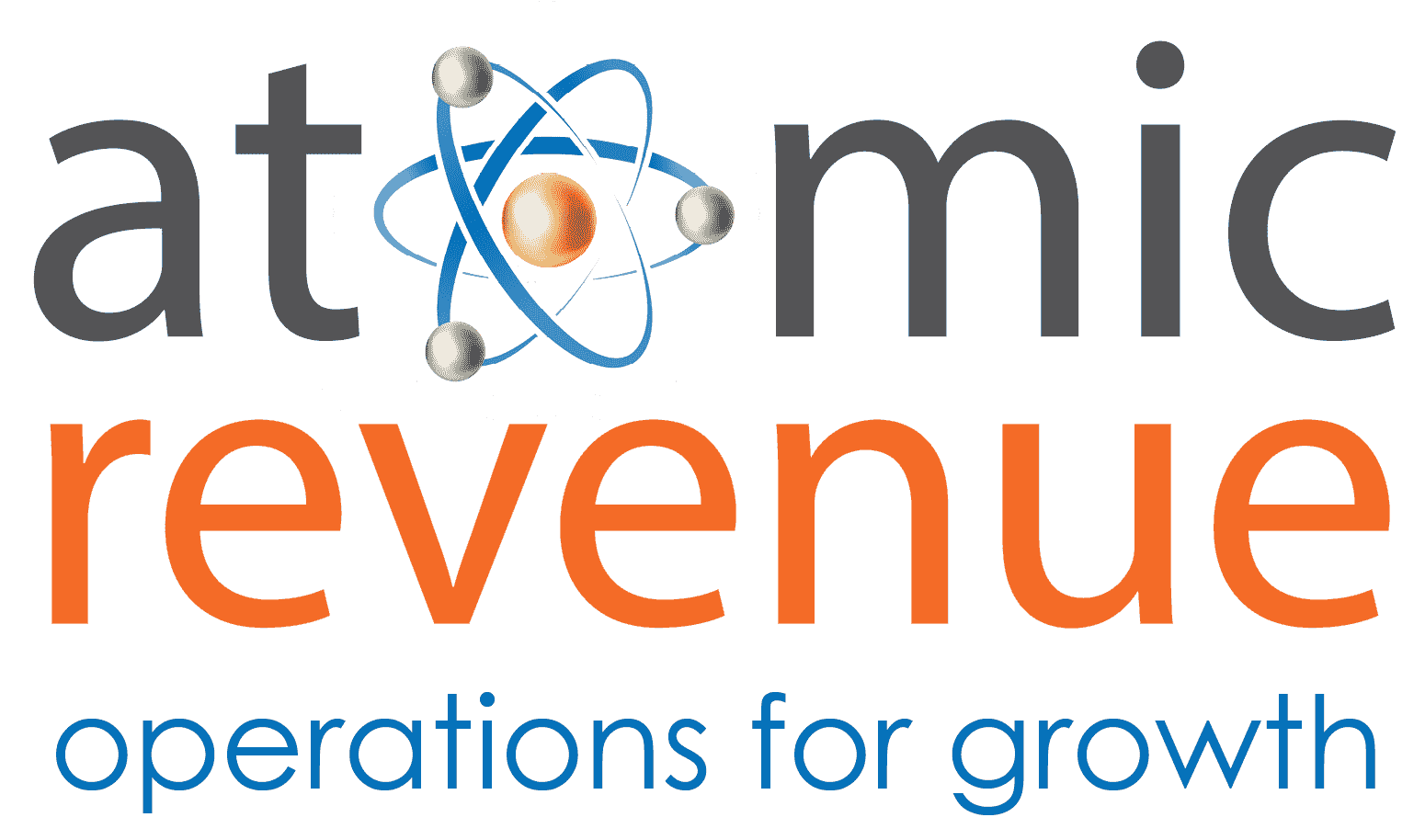
Are you refreshing your B2B company’s go-to-market strategy (GTMS) because the market has changed, or your offerings have evolved? Maybe you’re launching a new product or service or building an entirely new line of business?
No matter what your reason for creating a go-to-market strategy, the goal is the same – identify the best way to engage your target audience so you can build a relationship and they can evaluate buying what you sell.
Not sure what the difference is between a brand awareness campaign and a GTMS or how to build a successful go-to-market strategy for a specific product or service? You’re about to find out! And most of it is unlike anything you’ve learned about this process before. Atomic Revenue has defined a unique GTMS process that gets results no matter what product or service you’re selling or to whom.
The Difference Between a Brand Awareness Campaign & a Go-to-Market Strategy
Before we delve into how to build a go-to-market strategy, let’s talk about what it is not. It is not a plan to boost your company’s brand – that’s an awareness campaign.
A go-to-market strategy is for a product, service, or solution offering, which may or may not be a unique brand segment under your company umbrella. For example, Sprite is its own brand under the Coca-Cola umbrella; Inspection Services under ATZ Structural Engineering would be a service offering under ATZ’s brand. Both Sprite and ATZ’s Inspection Services would require their own GTMS.
A GTMS is unique to each product/service and the audience to which it is being sold.
People typically do a GTMS when they think their product or service offering is set. But really a go-to-market strategy’s purpose is to determine what your product or service offering is and how it’s tailored to the different market and buyer segments.
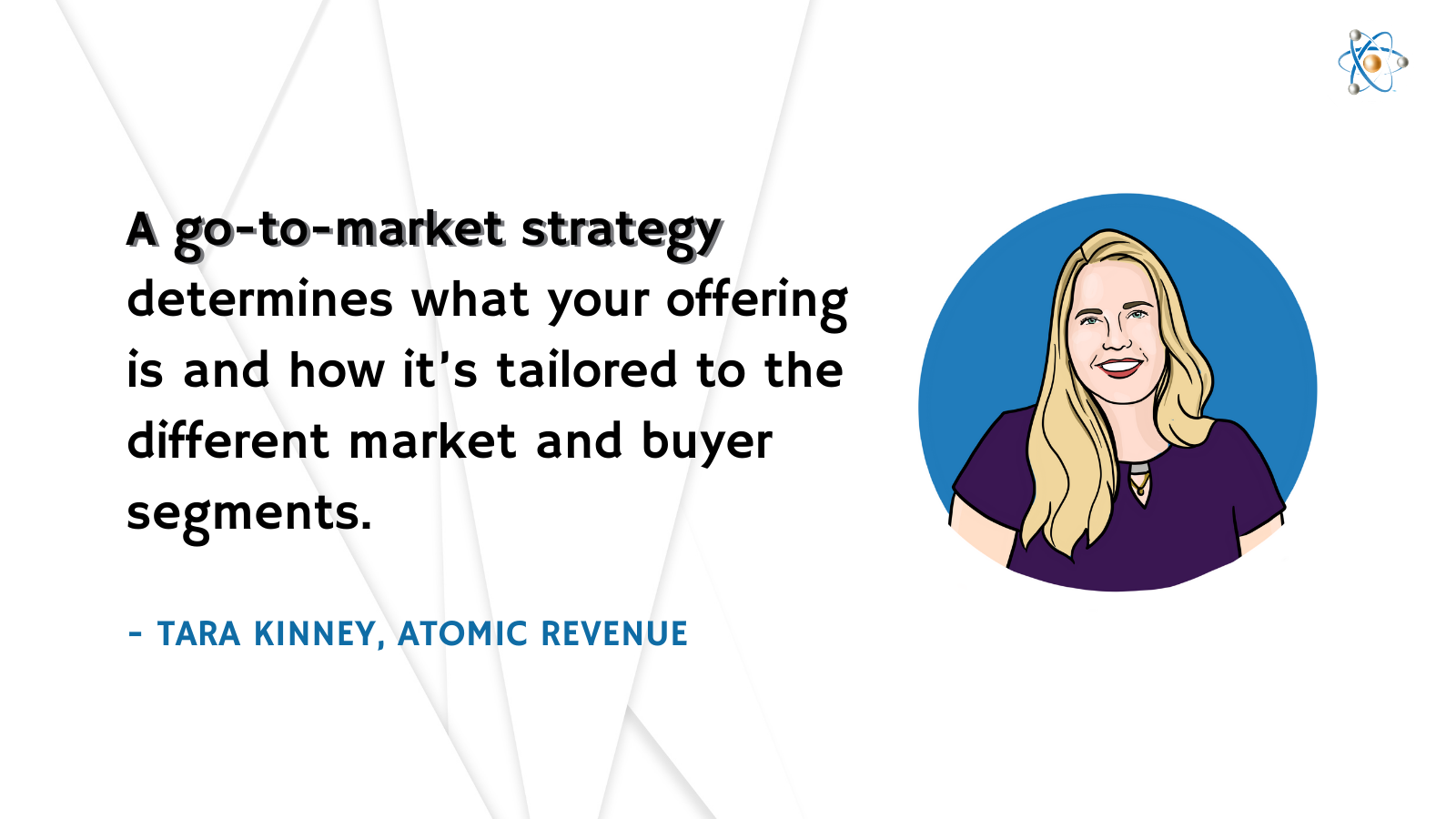
Why a Tactical GTM Strategy is Important
One of the most important parts of a GTM strategy is being tactical. And I use “tactical” literally here because there are different approaches to the go-to-market strategy process depending on who manages the process.
- Some leaders or external agencies will embark on long, drawn-out, years’ worth of research before finally getting to your GTMS.
- Then you have the overthinkers who will research and design and productize, research and design and productize, and never get your product or service out into the world.
- On the flip side, you have those who will jump into a go-to-market plan without any research at all. Depending on the business leader’s style – say a quick-start visionary – he or she will tend to just start doing stuff to see what works – the spaghetti-on-the-wall theory.
A GTMS is really an iterative process that requires a tactical approach. There’s a baseline objective you must establish, then run some tests, make adjustments, and so on, until it’s right. You’ll never get a go-to-market strategy right in one try. Just like split-testing ads to see which ones get the most action and by whom, you must test and tweak, test and tweak until you get to your desired outcome.
So now let’s get into the meat of how to do a go-to-market strategy, what to expect, and the tips you need to know to succeed.
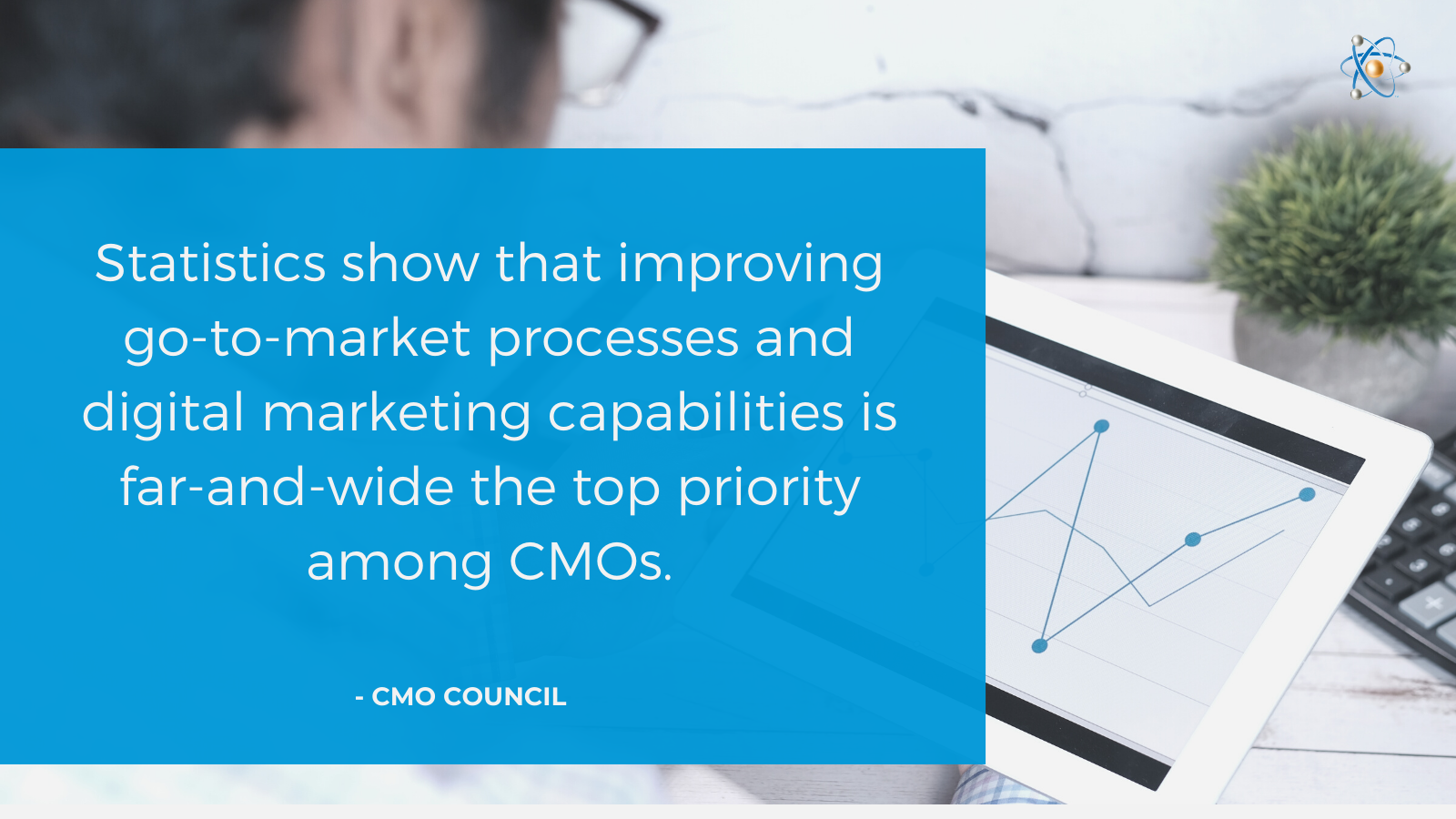
The 10 Elements of a Successful Go-to-Market Strategy
Atomic Revenue has spent years analyzing, implementing, and formulating the key elements for a go-to-market strategy that, when implemented as a whole, provides success every single time.
Though there are 14 GTMS elements in the Periodic Table of Revenue Operations, I’m going to touch on the top ten that will make or break your product or service launch.
1. Target Market
Think you know your market? Think you know what your market needs? How do you know this and validate it? Have you performed objective research and testing? The very first thing you need to do is identify your target market by analyzing which market buys what you’re looking to sell.
Anything you provide as a product or service needs to be of value to solve a problem or desire of a specific market. Therefore, before you do anything else, you need to figure out which market finds value in what you EXPECT to offer. Which market are you serving? Are there multiple markets? Knowing this helps you refine your new product/service and narrow the competitive differentiation research so you know which other companies are solving similar problems or challenges within that same market.
2. Competitive Differentiation Research
Conduct competitive differentiation research. Competitive differentiation is different from competitive analysis, which is most familiar to business leaders. You don’t just want to know what your competitors are doing – you want to differentiate your product or service to uniquely solve your target market’s problem.
Determine:
- How do others in your industry serve your ideal target market and who serves them best?
- How are you different or better than your competition?
- Is your target market solving their problem without you? How are they doing that?
- Document the opportunities where your market is not fully satisfied by your competitors' solution (reading public reviews can be a great source of information).
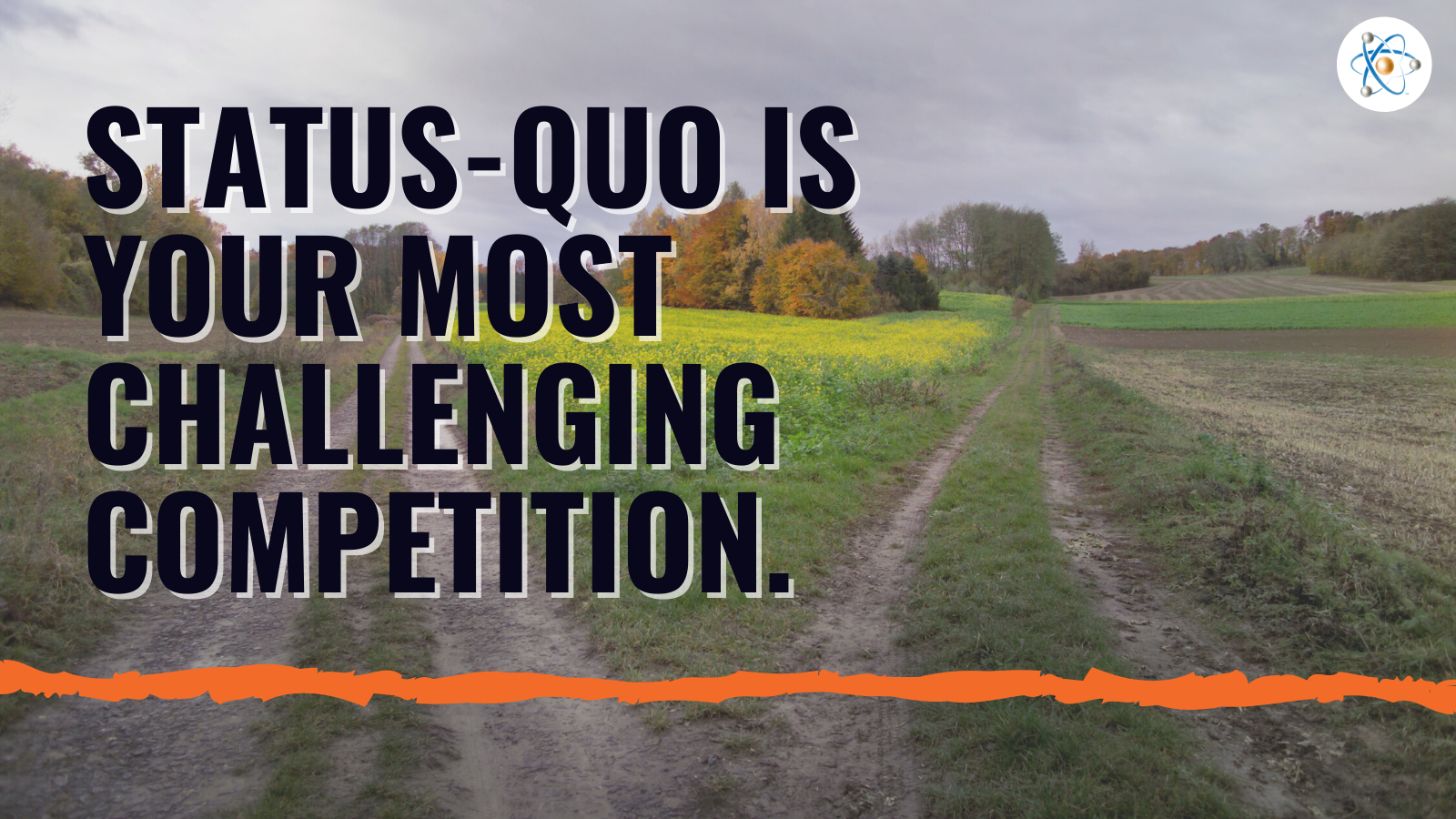
3. Buyer Personas
Next, identify buyer segments/buyer personas/buyer roles and define each buyer process. “Buyer personas are semi-fictional representations of your ideal customers based on data and research. They help you focus your time on qualified prospects, guide product development to suit the needs of your target customers, and align all work across your organization (from marketing to sales to service),” as defined by our partner, Hubspot. You can define your buyer personas by analyzing:
- Which buying roles, such as those defined by Hubspot as key decision-makers, champions, influencers, buyers, executive sponsors, budget holders, and blockers determine whether to buy from you?
- What is the process by which each buyer persona or end-user experiences buying from you? For example, do some want a sales meeting while others want to do their own research? Who is first in the buying process versus who can kill your deal at closing?
- What is your positioning of multiple offerings to each persona and buyer role?
“Why can’t I just buy an industry list and then send emails or call the people on the list?” you may be asking. It won’t work to randomly contact people. Not only do you need to define your buyers’ profiles, but you must also define their buying process to reach the right target at the right time with the right message.
4. Market Segmentation
You’ve chosen your target market. Within that market, you’ve identified buyer personas who are most likely to buy from you. Not everyone who can buy what you sell is necessarily going to buy from you or need to buy from you. So now you prioritize or “segment” which buyers to go after first based on ease, cost, and efficiency. Research, document, and use metrics to segment your markets by:
- The buyer personas in your market segment easiest to access and penetrate.
- The most worthwhile to target first based on market size or the competitive landscape in that market segment.
- Operationally, which ones can you execute on the fastest or first?
5. Product Positioning
By this point, you’ve acquired solid research and data to back up your ideal target market, buyer personas, and market segments. But have you dug into your value proposition, problems, pains, and resolutions aligned to the identified and prioritized market segments to position your product accordingly? Do you know how you’re going to position your product or service to solve their problem in a unique but efficient way?
While the value proposition, problems, pains, and resolutions are often outlined for an entire company or for a product/service as a whole, the reality is the value proposition, problems, pains, and resolutions are very different for each buyer persona and should be defined per product or service.
From a pricing and positioning perspective, let's say you have a small, medium, and large product class or service offering. Maybe a GTMS for all of them as a group makes sense, or maybe it makes more sense to focus GTMS on one of the multiple offerings. For example, in your sales strategy, will you start new buyers on the small offering and then grow them into the large offering over time? Or is your strategy to close big and, if that doesn’t work, fall back to the medium offering, and if that doesn’t work, then fall back to the small? What is your reasoning?
- Of the 30+ buying reasons, identify which appeal to your prioritized segments first to get them interested, and then determine which appeal to them next to nurture them through the sales process/buying cycle.
- Pricing strategy is critical here to support the GTMS strategy for both competitive differentiation and product positioning. Your price has the megaphone as the loudest and most distinctive customer validation of your GTMS. Will your price build or erode trust with your buyers? How do pricing considerations refine your market segmentation, competitive differentiation, and product positioning?
This will help you determine how to position your product/service for the fastest route to revenue as well as what changes/modifications should be made to competitively address the needs of priority market segments. You want to communicate with your buyer personas right when they are participating in the decision-making process about your product or solution.
“In your go-to-market strategy, it’s imperative to look at all the reasons people buy from you and which reasons appeal to each segment in which order to advance their decision to consider your new offering.”
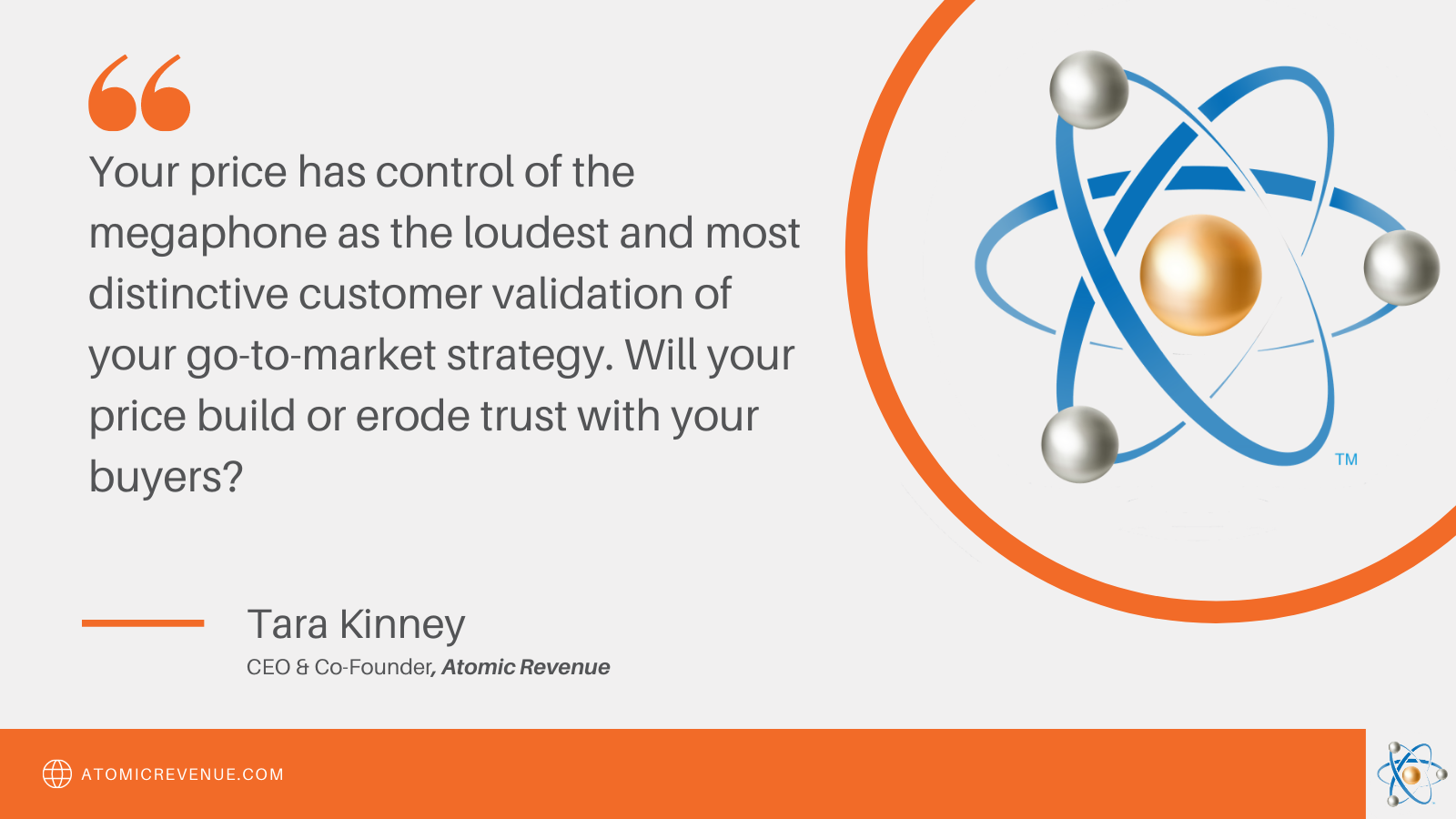
6. Value Proposition A/B Testing
Based on the data, determine all the ways in which you will put your solutions, or your “value propositions,” in front of the buyer segments. The more ways you choose, the more it will cost.
- Test 2–3 value-prop messages and delivery methods, as well as how you introduce yourself to each market.
- These tests will get you in front of buyer personas per segment on a smaller scale to help determine what works best before you put all your eggs in one basket.
- Once you test the different ways of reaching your target audience, you will know which method inspired action for each buyer persona. You will also know which of the various leading value props worked best in cooperation with those methods.
This data is crucial to a successful product launch and the resulting revenue outcomes.
7. Customer Experience
To give your customers the best experience, start with the end in mind, back into it for setting proper expectations. What is the experience you want your customers to have after using your product/solution? How long does it take them to achieve the level of experience you want them to achieve?
- Create a timeline to go through the seven stages of the buyer journey (below), identify what it will take to get to satisfaction, retention, and referrals or “customer advocacy.”
- Then pinpoint if there’s anything else your buyers might purchase from you as a result of purchasing this new product or service offering? Is this a doorway to expansion?
The success of your new product or service hinges on the entire customer experience (CX) being thought out in every detail so that it is always positive.
8. Buyer Journey
It’s time to deliver! You’ve mapped out the ideal customer experience, now take your potential buyers through the seven stages of the buyer journey – awareness, inquiry, sales conversion, satisfaction, retention, expansion, and customer success. To ensure they are nurtured through their journey, start by answering:
- How do we create awareness and interest so that buyers are willing to be educated and evaluate a buying decision?
- How are we going to onboard them after they've decided to buy?
- How are customers going to finalize their purchases? Will they sign a contract? Will they make an online purchase? Will they be assigned a sales rep?
- How will we deliver the product or service?
- How will we ensure the customer is happy and will return for more?
- What will we do to nurture each buyer to get to customer advocacy?
- What price aligns with the value of this purchase while also adequately covering the costs of the buyer experience?
9. Opportunity Qualifications
Now that you've charted your buyer journey, you will find some buyers are more qualified than others to go through all seven stages. When you look at an entire market segment, there are still some within that segment who may not have a mutually beneficial experience on your buyer journey. Targeting these sales opportunities will reduce conversion rates, decrease satisfaction levels (internal and external customers), and squeeze profits. This is where a good opportunity qualification process makes the most of your budget and efforts.
Even though you had a strong idea of your market segment, your buyer personas, and all the parts of your go-to-market strategy, at this point you can narrow your focus to the most qualified sales opportunities. Determine which buyers are highly qualified to go through your buyer journey because they will fulfill your goals and receive undeniable value from your solution.
An opportunity qualification focus leads us to metrics that matter and lead scoring to manage the data you’ve so carefully collected during your GTM testing.
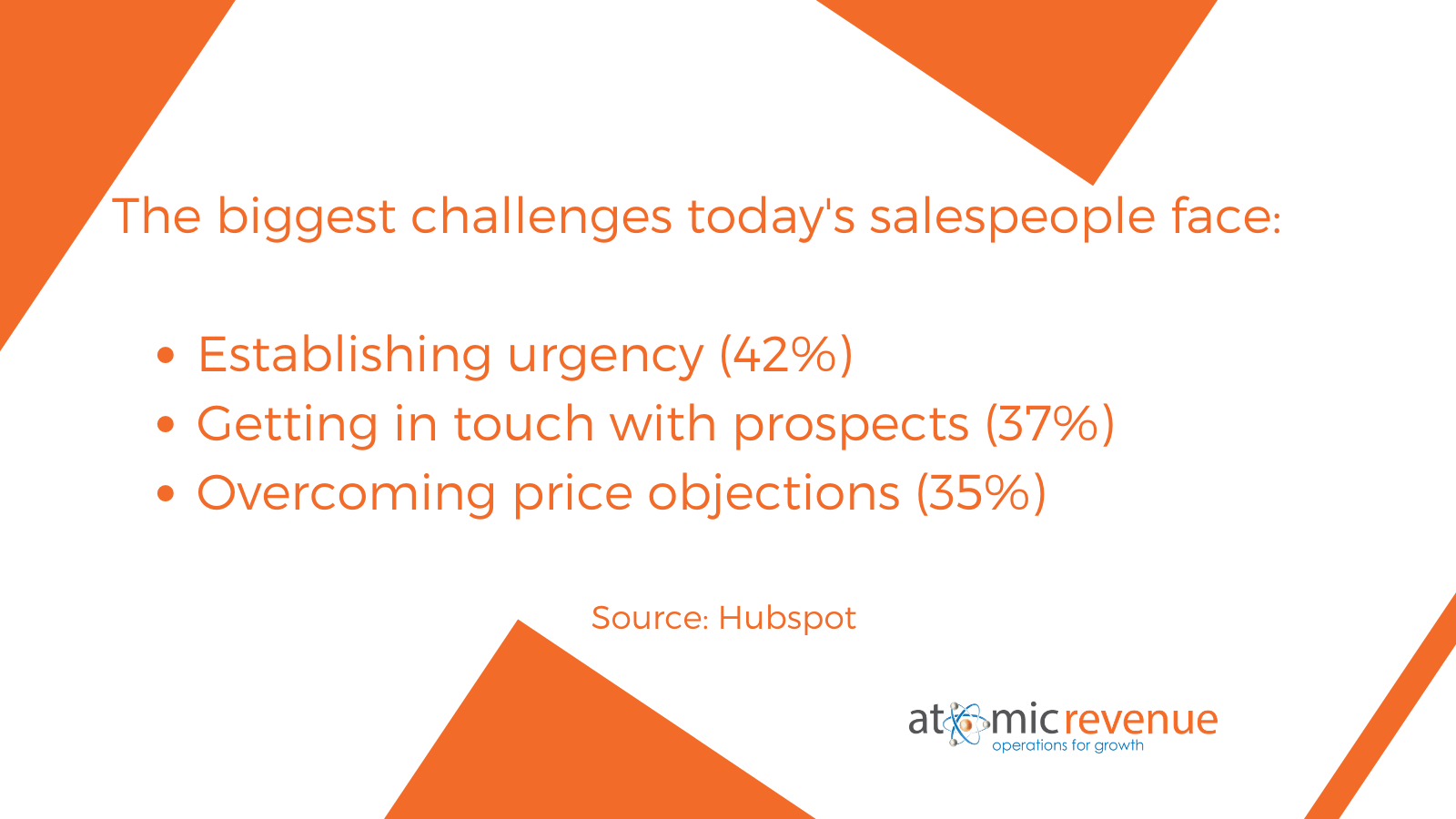
10. CRM to Manage Go-to-Market Process and Data
This is a lot of information and data collection. So how are you going to manage the entire go-to-market process and all the data you're collecting that tells you whether the opportunities are qualified, the customers are making it through the buyer journey the way you’ve defined, and the CX is what you want it to be after your solution is delivered?
You really need to have the right customer relations management (CRM) tool in place. A CRM that is implemented properly will capture the data that tells you if your GTMS is on track or if it's derailing. It allows you to make quick decisions to adjust where needed to ensure your go-to-market strategy is going to work or not.
With these 10 GTMS elements (a couple of them are also part of lead generation, sales conversion, and digital operations elements) you have a solid jumping-off point to launch your go-to-market strategy. But, be warned. This is not a quick process. When done right, a GTMS will take months or even years, depending on your sales cycle.
How Long Does It Take to Implement a GTMS?
Many people think the GTMS process looks like this: you create a go-to-market strategy, implement it as soon as possible, and just like that, people will start buying. If you’re doing your GTMS right, the process plays out over time. You’ll have your eggs spread out in different baskets until you get enough data to help determine what’s working and what’s not.
Then, using that data, you stop what’s not working, perfect the things that are working, and move more resources into those methods. To do this, you need technology and systems to manage the process and provide the data visibility (SaaS, ROMaas, CRM) so you can make decisions about how to move your GTMS forward and get the most ROI from the things that you’re doing.
Take note – in any go-to-market strategy, there is an upfront outlay of resources required to start moving into space where you begin to generate an ROI. Your GTMS must also account for the timeline of your buying process – is it two months, six months, or two years?
Here is the typical timeframe:
-
It takes the first six months to determine which methods will yield the most profitable results.
-
The second six months focus on driving more resources into the profitable results-producing area – the research is done, now spending time to drive ROI.
-
If you have a long sales cycle – let’s say two years – be prepared to have enough cash flow (and patience) to withstand a lengthy GTMS.
- If you have a shorter buying process, people can make faster decisions, and your path to new-product revenue will be shorter – though it is still likely to be a 6–12 month GTMS.
As Part of Revenue Operations Solutions, does a GTMS Come First?
At Atomic Revenue, we do things quite differently from sales consultancies and marketing agencies. We don’t just assume you need a GTMS first if you’re launching a new product or service, and we don’t assume you need one as part of your revenue operations solutions.
We start with a diagnosis of your company’s people, process, and data (KPIs) to see which direction you need to go for the fastest, most reliable results.
The quickest path to revenue is usually not a new product or service offering. If we are hired to help launch a product or service, typically the services already supporting the company will help pay for the GTMS of new products, so it makes the most sense to bolster the profit potential of existing services while the GTMS unfolds.
However, with most of our clients, the go-to-market strategy comes out of addressing the existing, low-hanging revenue fruit where we find new offerings that would improve the company's revenue production process. We then help them modify an existing product/service to strengthen their differentiation, whether that’s tiers of offerings or product combinations, and generate a go-to-market strategy that intercepts under the same brand.
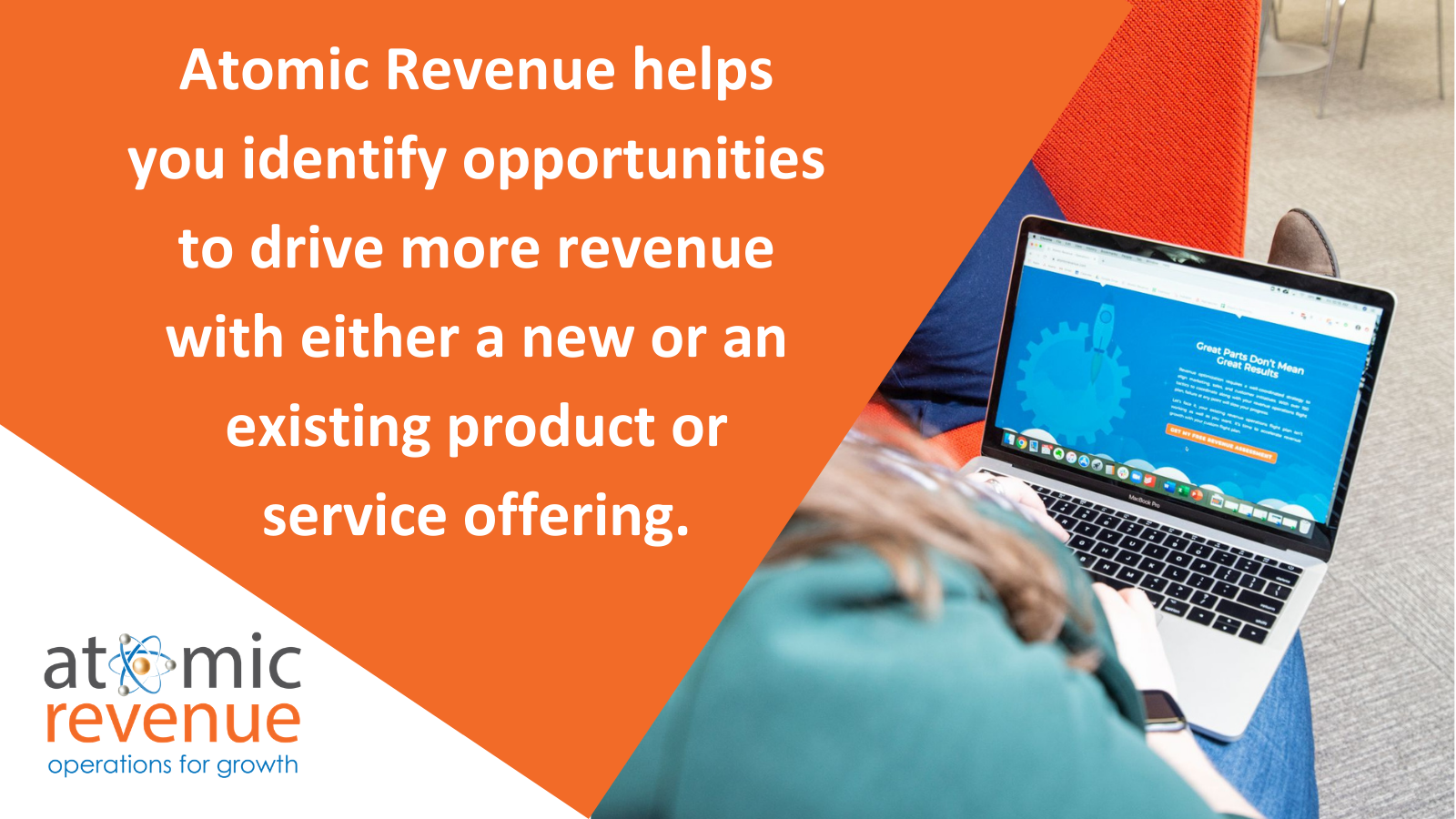
The Right Go-to-Market Strategy Will Launch Revenue
Now you know how to build a go-to-market strategy and create the right type of product or service launch by identifying, with meaningful data, your buyer segments/personas and target market, your competitive differentiation and market segment, and your product positioning, pricing, and value proposition for your unique offering.
And a GTMS isn’t just for new products. You may find, after a revenue diagnostics, an opportunity to repurpose or package existing services or products to reach your revenue goals.
If you’re ready to look at your GTMS and would like an objective perspective, Atomic Revenue will help facilitate your mission so you have a clear, yet agile, progress in a profitable direction. Our approach focuses on a buyer journey that brings in quality leads who can actually buy what you sell (and makes your CFO very happy with EBITDA performance!).
Feel free to reach out for a no-obligation chat to learn more about how our GTMS process can launch your B2B product or service offerings.
 About the Author
About the Author
Tara is the Founder and CEO of Atomic Revenue, where she continues to problem-solve, innovate, and define the formula for and establish the discipline of Revenue Operations that launches client growth with stronger foundations and better ROI. As the company's EOS® Visionary, it is her passion to share what she has learned over the course of her career and help other business owners and leaders increase revenue and grow with consistency. She is also a renowned national speaker.


